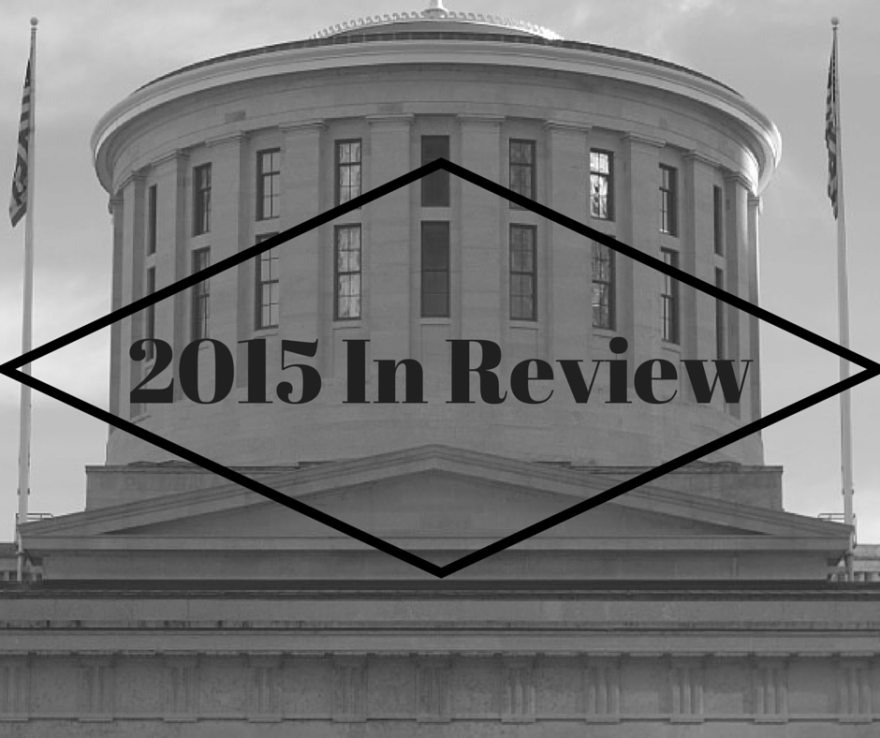It will be a few years yet before Ohioans see how a constitutional change in the way Statehouse lawmakers districts are drawn plays out in the future. And as our "2015 in Review" series explains, more changes might be on the way.
Issue 1, the Statehouse redistricting proposal, was endorsed by Republicans, Democrats, independents, good government groups and more. In fact, there wasn’t an organized campaign against it. The campaign to add more bipartisan input to the way Ohio draws boundary lines for state House and Senate districts was somewhat boring.
But backers said Issue 1 would allow voters to choose who represents them rather than allowing politicians to choose their voters. It changes the five-member board that draws the lines to seven members and requires minority party buy-in. And if that doesn’t happen, voters would have the opportunity to send those involved in the map drawing process back to the drawing board. It wasn't a perfect proposal, said Common Cause Ohio’s Catherine Turcer, but she said it’s better than what Ohio has had in the past.

“This doesn’t mean there is going to be a wholesale change. You know, we are all looking for that magic bullet. This isn’t going to be it. But it will make elections fairer by making those districts fairer,” said Turcer.
But Rob Walgate with the conservative Ohio Roundtable questioned whether passage of this plan will actually improve the process because it relies on the Ohio Supreme Court to serve as a backstop. Walgate says a ruling saying his group couldn't legally challenge the state's job creating agency JobsOhio shows that the court is unwilling to hold state leaders accountable.
“How are we going to guarantee it will be followed? If it’s not followed, if that is not followed, who has the right to sue on the constitutional basis and who is going to be heard in the court of law? I don’t know because the court refuses to answer those questions or talk about it so I think we have bigger issues to look at,” Walgate said.
But voters seemed confident - they passed those legislative redistricting reforms in a big way – by more than a two to one margin. But they'll have to wait a while to see what happens. The first races to be affected by Issue 1 will be those for the Ohio House and Senate in 2022.
But backers of Issue 1 aren't done - they want similar changes for drawing Congressional districts. Issue 1 only affected legislative districts because earlier this year, some state lawmakers had questions about whether federal courts would allow the redistricting changes on a congressional level. But Republican House Speaker Cliff Rosenberger said after the election there's no hurry.
“We gotta let this process work its way through. We just passed Issue 1 on the ballot. Now let’s give it a test. Let’s see how the whole thing works itself out,” Rosenberger said.

However, Republican State Senator Frank LaRose, who was instrumental in getting Issue 1 to the ballot and passed, says now that the US Supreme Court has settled some issues on Congressional redistricting, the time is now for it to happen in Ohio.
“My fear, though, is if we don’t, as a legislature, work in a bipartisan way to reform this process that what will happen is because there is so much dissatisfaction out there that some group, most likely an ideological group, will circulate the petition signatures to put their own congressional redistricting reform proposal on the ballot,” LaRose said.
And he might be right. Turcer with Common Cause Ohio says if lawmakers drag their feet and look like they aren’t moving ahead with Congressional redistricting, her group will likely collect petition signatures to put it on the ballot as part of a citizens redistricting effort.



